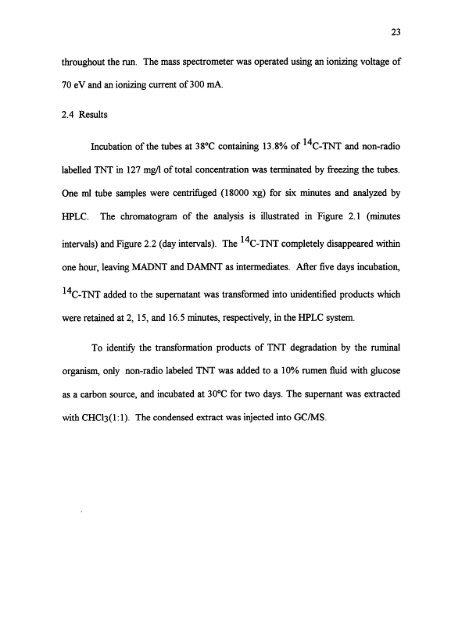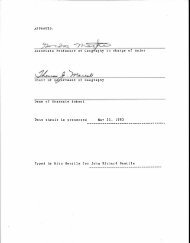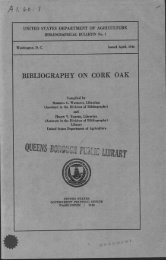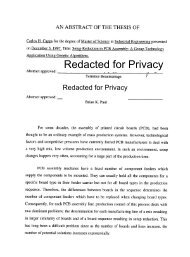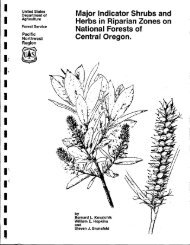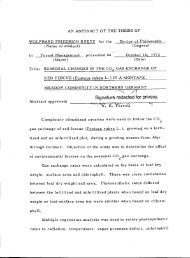In vitro anaerobic trinitrotoluene (TNT) degradation with rumen fluid ...
In vitro anaerobic trinitrotoluene (TNT) degradation with rumen fluid ...
In vitro anaerobic trinitrotoluene (TNT) degradation with rumen fluid ...
Create successful ePaper yourself
Turn your PDF publications into a flip-book with our unique Google optimized e-Paper software.
throughout the run. The mass spectrometer was operated using an ionizing voltage of<br />
70 eV and an ionizing current of 300 mA.<br />
2.4 Results<br />
<strong>In</strong>cubation of the tubes at 38°C containing 13.8% of 14C-<strong>TNT</strong> and non-radio<br />
labelled <strong>TNT</strong> in 127 mg/1 of total concentration was terminated by freezing the tubes.<br />
One ml tube samples were centrifuged (18000 xg) for six minutes and analyzed by<br />
HPLC. The chromatogram of the analysis is illustrated in Figure 2.1 (minutes<br />
intervals) and Figure 2.2 (day intervals). The 14C-<strong>TNT</strong> completely disappeared <strong>with</strong>in<br />
one hour, leaving MADNT and DAMNT as intermediates. After five days incubation,<br />
14 C-<strong>TNT</strong> added to the supernatant was transformed into unidentified products which<br />
were retained at 2, 15, and 16.5 minutes, respectively, in the HPLC system.<br />
To identify the transformation products of <strong>TNT</strong> <strong>degradation</strong> by the ruminal<br />
organism, only non-radio labeled <strong>TNT</strong> was added to a 10% <strong>rumen</strong> <strong>fluid</strong> <strong>with</strong> glucose<br />
as a carbon source, and incubated at 30°C for two days. The supernant was extracted<br />
<strong>with</strong> CHC13(1:1). The condensed extract was injected into GC/MS.<br />
23


